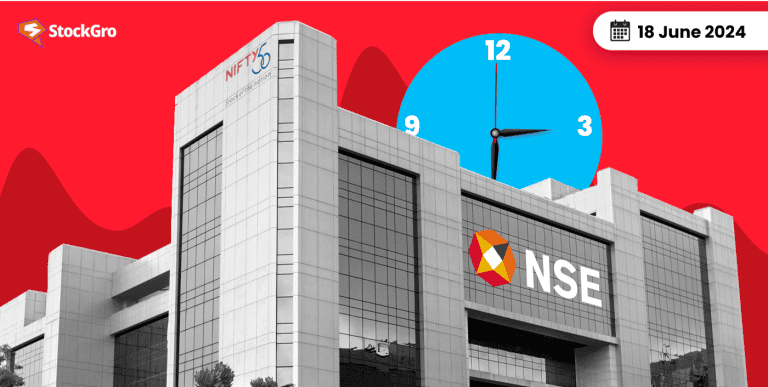
The use of smartphones and the internet has grown remarkably in India in recent years. With significant growth anticipated, the quick e-commerce market in India is expected to reach $300 billion by 2030.
Quick commerce is an innovative e-commerce model that focuses on super-fast delivery services. It merges conventional trade practices with modern technological advancements, which leads to the delivery of small orders right at your doorstep within 10-30 minutes.
A company in the making, Open Network for Digital Commerce (ONDC), reached a remarkable milestone of 10 million monthly transactions in June as reported by Equirus Securities. This feat is a game-changer that signifies incredible progress and opportunities for ONDC amidst an ever-evolving digital commerce landscape in India.
This article outlines the particulars of this landmark moment and its implications for the future of digital commerce.
Must read: Overview of the e-commerce industry in India
Background on ONDC
The ONDC is an initiative to transform electronic commerce by building an open network that enables all to sell and facilitate selling without partiality or unfair algorithms.
ONDC introduces an open network for different players in the e-commerce ecosystem including vendors, logistics partners, technology service providers, and buyers. Unlike traditional platforms, ONDC ensures no single entity has control over the end-to-end activities of a buyer’s purchasing journey. Promoting equity, transparency and equal opportunity for stakeholders is the goal.
ONDC operates in 607+ cities with live domains such as food & beverages, grocery stores, fashion, electronics etc. More than 6.03+ lakh sellers and service providers are active on this platform, making it very dynamic.
The ONDC India registration process is fairly simple. Start by selecting the most suitable role on the ONDC’s website and then click on the “Join ONDC Network” option. Whether you are a big or a small business, as long as you can deliver high-quality service that aligns with your chosen role, you can thrive on ONDC.
The milestone achievement
The government-backed Open Network for Digital Commerce processed 10 million transactions in June 2024, marking yet another milestone, according to the most recent Equirus Securities India Equity Research BFSI sector report. Among these ONDC transactions, 6.1 million are non-mobility and the rest are mobility ones.
According to the report, over the last two months, there has been a steady increase in monthly transactions by one million, which highlights ONDC’s strong growth trajectory.
Non-mobile transactions increased from 3.6 million in March 2024 to 6 million in June 2024, primarily due to retail demand, while mobile transactions depressed from 4.1 million to 3.9 million in the same time frame.
Furthermore, it can be inferred that ONDC is changing its way of incentivising participants; for instance, starting from Q2 FY2025 volume linked financial incentives for network partners have been reduced by up to 75%.
Additionally, apart from transactional services, ONDC has been actively exploring other avenues as well. Besides piloting projects on consumer loans, it’s also in preparation for larger B2B loans between ₹10-15 million.
How does ONDC work?
The Open Network for Digital Commerce is a network that links different digital commerce platforms and applications by employing open network protocols.
For sellers:
- Sellers can sign up for the ONDC network through advanced seller apps such as Mystore, which provides them with an easy login.
- Once registered, sellers can place their products and services on the platform.
- These listings will be seen by potential buyers all over ONDC.
For buyers:
- Buyers can access the ONDC network using various apps within the network.
- Product search, price comparison and transaction completion anywhere in the network with any seller are allowed for the buyer.
- This open connectivity will enable buyers and sellers to interact across various platforms, thus creating more dynamism in a competitive market.
Positive implications of ONDC
- More opportunities for small businesses: ONDC makes small businesses more visible on e-commerce platforms while helping them compete with big ones. Like offering them an equal opportunity to blossom and develop.
- More choices for consumers: Many sellers who offer a variety of products utilise ONDC. This means that customers have great choices when they buy goods. It’s like having a supermarket with varieties of shops in it!
- Including everyone in the economy: ONDC enables small businesses all over America to join the Internet marketplace. Even though they are located far from towns or cities. It helps to improve local economies and integrates everyone into the online space.
- Innovation and working together: ONDC encourages innovation in conjunction with partnerships. Startups can work with large companies or even government agencies. It’s a sort of creative workshop where e-commerce is made better than before.
- Protecting data and privacy: Concerns about personal information privacy are important to ONDC. The customers can determine how their personal information is handled. Trust is built, and everyone feels safer shopping online.
Also read: Micro, Small and Medium Enterprises in India – Here’s all you need to know!
Negative implications of ONDC
- Adoption challenges: To make ONDC successful, various enterprises and consumers have to employ it. Nonetheless, it may not be easy to get everyone on board because there is a fear of rejection by people who are not aware or lack the need to blend well with existing systems.
- Disruption for established players: Big e-commerce companies might lose their monopoly over the industry through ONDC. This will promote fair competition among them; however, other platforms in this industry could also react negatively towards this, thus impacting their market share and profits.
- Challenges of disruptions and transactions: By compelling companies to adopt new procedures and technologies, ONDC can upend the current prevailing models. This shift is difficult, requiring infrastructure improvement, training workers, and initial monetary inputs, particularly in terms of small firms that do not have much money.
- Regulatory and compliance considerations: New regulations against online trading may be required as ONDC moves to standardise digital commerce practices. These challenges result from making laws that foster an innovative sector without disadvantageous customers and also ensure a level playing ground for market participants.
- User experience and platform integration: Ensuring that businesses and customers enjoy using ONDC is critical to its success. The provision of uncomplicated platform integration, user-friendly interfaces, and reliable technology will prevent any usability bugs that might dent its acceptance within the public domain.
You may also like: The CIBIL commercial report: Steering businesses towards prosperous shores
Bottomline
ONDC’s growth trajectory demonstrates a bright future for digital commerce in India. There is no doubt that ONDC has laid the groundwork by empowering small businesses, offering diverse consumer choices and promoting an inclusive economy so that it becomes a critical component of future e-commerce industry trends in India.
As it develops further, ONDC India looks set to become one of the key foundations for India’s digital economy driving innovation as well as growth in years ahead.

